Progress being made by the biggest STEM companies, but the FTSE 250 companies have more work to do.
FTSE 100
For the first time, the majority of the companies indexed on the FTSE 100 are now classified as STEM – demonstrating that the importance of STEM to the UK economy is growing.
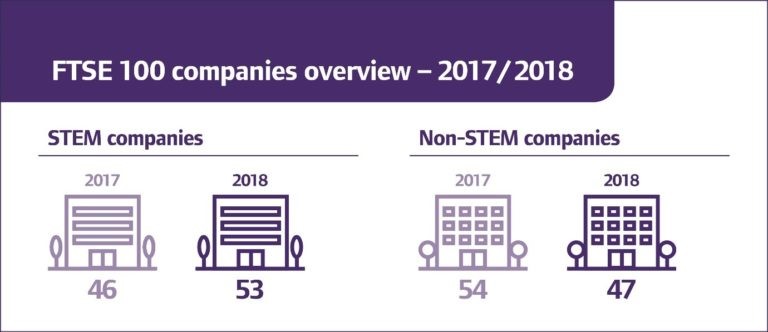
40% (21/53) of STEM companies in the FTSE 100 have met the Hampton-Alexander target of 33% women on their boards – a sizeable increase over the 26% of STEM companies who had managed it last year.
This means that more STEM companies have achieved the target than non-STEM companies, as 36% of the non-STEM companies on the FTSE 100 have achieved 33% women in the boardroom.
However, 30% of the individuals who are STEM board members are female (164/538), the same percentage as for non-STEM companies (153/513) – this means that the women on FTSE 100 STEM boards are relatively more spread out amongst those companies than is the case for women on non-STEM company boards.
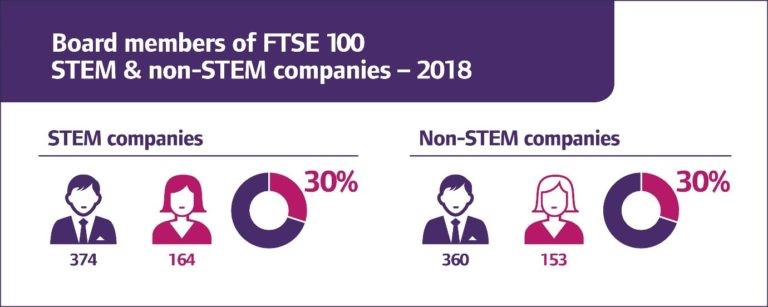
Only 9% of the women on FTSE 100 STEM boards are in executive positions (12/164). However, this represents an increase on the proportion in 2017, which was 7% (9/136) – so we are making progress.
In addition, two of the seven female FTSE 100 company chairs are with STEM companies.
This means that the vast majority of women on FTSE 100 STEM companies’ boards are in non-executive roles and that the lion’s share of executive roles is still going to men.
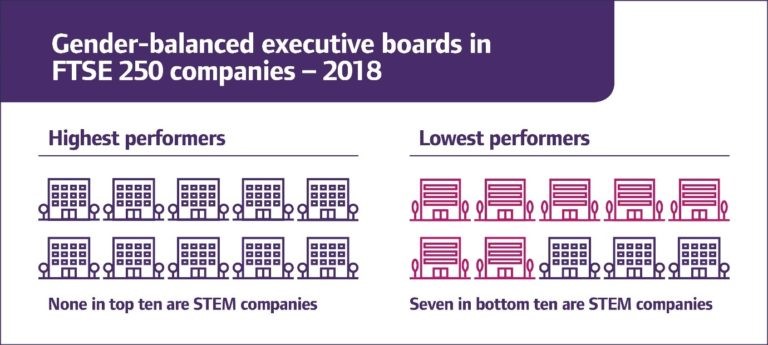
However, the biggest STEM companies have more work to do at executive committee/direct report level. 15% (8/53) of the FTSE 100 listed STEM companies have 33% women at this level, compared with 23% (11/47) of the non-STEM companies.
Overall, the improvement in STEM FTSE 100 companies’ performance implies that there is a correlation between having more women on the board and reaching the FTSE 100.
While correlation doesn’t necessarily mean causation, this implies that there is a good financial case for companies to ensure the 33% target is met – and there is a wealth of evidence to suggest that more diverse groups of people tend to make better decisions.
FTSE 250
105 of the 250 FTSE 250 companies are in STEM fields, which means that a majority, 145, are not STEM companies. The STEM proportion has increased since 2017, when 90 FTSE 250 companies were in STEM fields (and 160 were not).
17% of FTSE 250 STEM companies have achieved the target of 33% women on their boards
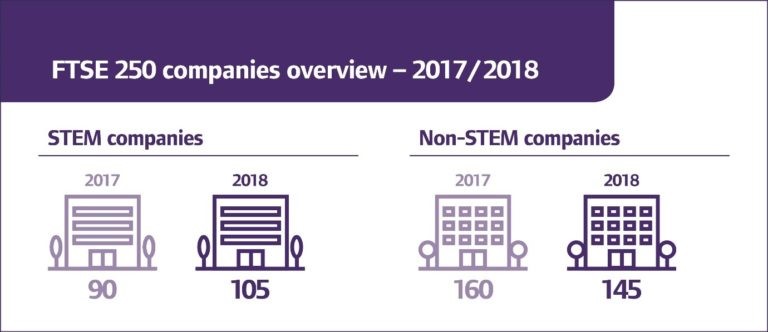
The average percentage of women on FTSE 250 STEM companies’ boards is 24%, which is 6 percentage points lower than STEM FTSE 100 companies have achieved. This suggests that FTSE 250 STEM companies are not taking the same level of action as the biggest STEM companies, or that the action they are taking is not having the same impact.
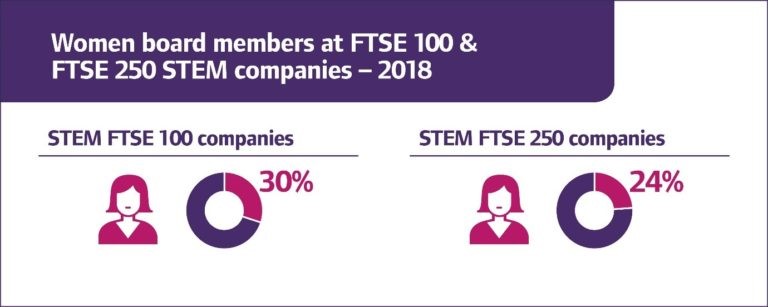
It is important that FTSE 250 STEM companies implement measures below board level to build a pipeline of female talent. As it stands, none of the ten best-performing FTSE 250 companies at getting women onto executive committees or into direct report positions are STEM – while seven of the ten companies identified as most in need of improvement are in STEM.

However, it is pleasing that a number of FTSE 250 STEM companies are signed up to the WISE Ten Steps – so have recognised the importance of getting more women into their boardrooms and are doing something tangible about it.
